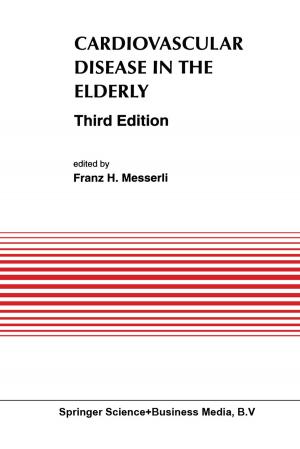Cardiac Ischemia: From Injury to Protection
Nonfiction, Health & Well Being, Medical, Specialties, Internal Medicine, Cardiology| Author: | ISBN: | 9781475730258 | |
| Publisher: | Springer US | Publication: | March 9, 2013 |
| Imprint: | Springer | Language: | English |
| Author: | |
| ISBN: | 9781475730258 |
| Publisher: | Springer US |
| Publication: | March 9, 2013 |
| Imprint: | Springer |
| Language: | English |
Cardiac Ischemia: From Injury to Protection has been divided into six parts. The first part describes the differences between hypoxia and ischemia, animal models, the effects of ischemia on myocardial function and metabolism, and the electrophysiological consequences of ischemia. The second part deals with the mechanisms of cardiomyocyte death in ischemia, structural aspects of irreversible ischemic injury, necrosis and apoptosis of cardiac cells, the role of calcium, and the concept of calcium antagonism. The third chapter is a brief description of reperfusion injury, its clinical relevance, and possible prevention. The fourth part summarizes changes in myocardial vasculature during ischemia and reperfusion. The fifth part is the survey of two main possibilities for increasing cardiac resistance to ischemia and hypoxia, i.e. long-lasting adaptation to chronic hypoxia and short-lasting preconditioning. The last part of the book deals with comparative and ontogenetic aspects of cardiac sensitivity to oxygen deprivation; this chapter also summarizes the ontogenetic differences and limitations in endogenous and exogenous protection of the ischemic/hypoxic heart.
Cardiac Ischemia: From Injury to Protection has been divided into six parts. The first part describes the differences between hypoxia and ischemia, animal models, the effects of ischemia on myocardial function and metabolism, and the electrophysiological consequences of ischemia. The second part deals with the mechanisms of cardiomyocyte death in ischemia, structural aspects of irreversible ischemic injury, necrosis and apoptosis of cardiac cells, the role of calcium, and the concept of calcium antagonism. The third chapter is a brief description of reperfusion injury, its clinical relevance, and possible prevention. The fourth part summarizes changes in myocardial vasculature during ischemia and reperfusion. The fifth part is the survey of two main possibilities for increasing cardiac resistance to ischemia and hypoxia, i.e. long-lasting adaptation to chronic hypoxia and short-lasting preconditioning. The last part of the book deals with comparative and ontogenetic aspects of cardiac sensitivity to oxygen deprivation; this chapter also summarizes the ontogenetic differences and limitations in endogenous and exogenous protection of the ischemic/hypoxic heart.















